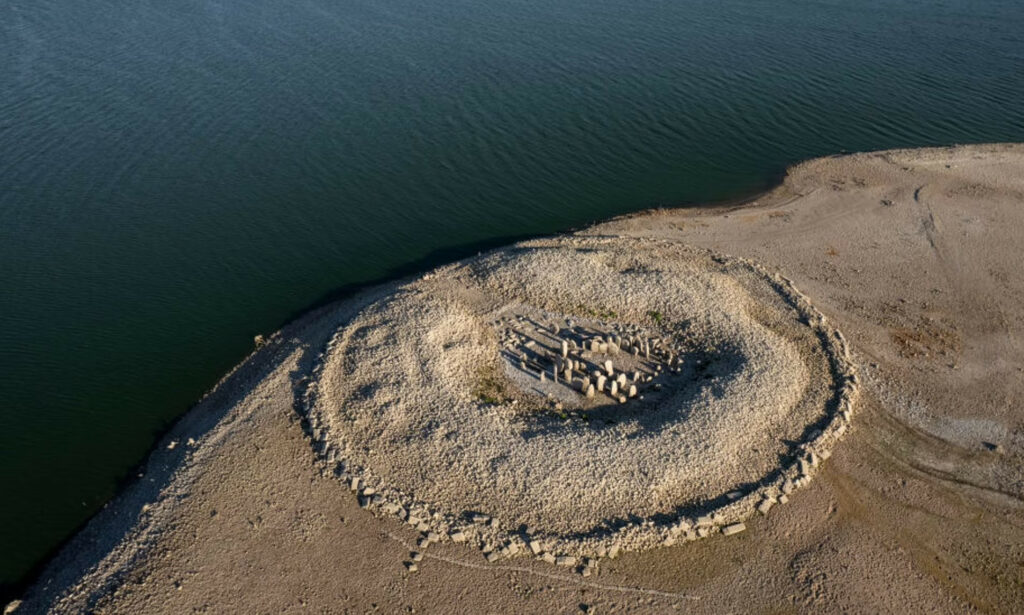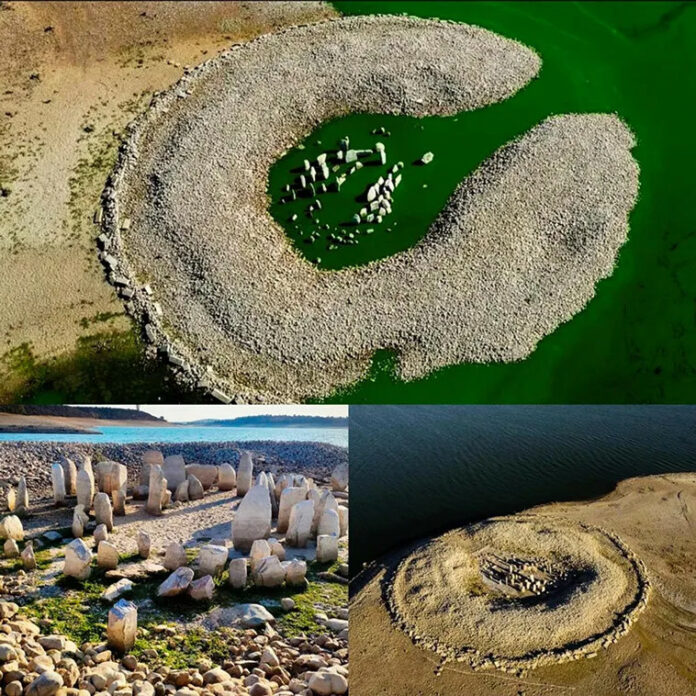Uncovering an Ancient Wonder

In the heart of Spain’s Extremadura region lies a megalithic marvel that predates the Egyptian pyramids. The Dolmen of Guadalperal, affectionately known as the “Spanish Stonehenge,” has captivated archaeologists and history enthusiasts alike with its mysterious origins and intermittent appearances.
A Glimpse into Prehistoric Spain

This ancient monument, consisting of approximately 150 granite stones called orthostats, was erected over 7,000 years ago in Peraleda de la Mata. Some of these massive stones tower over two meters tall, creating an awe-inspiring sight that rivals its more famous English counterpart.
A Monument Lost and Found
Submerged Secrets

Unlike the Stonehenge of England, which stands proudly on open plains, the Spanish Stonehenge has a more elusive nature. Situated on the banks of the Valdecañas reservoir, this prehistoric wonder spends much of its time submerged underwater, a consequence of reservoir construction in the 1960s.
Drought Reveals Ancient Treasures

It wasn’t until July 2019 that the full splendor of the Dolmen of Guadalperal was revealed to the modern world. A severe drought caused water levels to recede, exposing the 150 stones in their entirety for the first time in half a century. This rare event, captured by NASA satellite imagery, offered researchers an unprecedented opportunity to study the site.
Unlocking the Mysteries
A Solar Temple?
Experts theorize that the Spanish Stonehenge may have been strategically aligned with the summer solstice, possibly serving as a solar temple. This alignment suggests a sophisticated understanding of celestial movements among its prehistoric builders.
Ancient Artistry

Some of the stones bear intriguing carvings, including a menhir featuring a curved line. This enigmatic etching could represent a serpent or perhaps a rudimentary map of the nearby Tagus River, adding another layer of mystery to the site.
A Sacred Space

While the exact purpose of the Dolmen of Guadalperal remains a subject of debate, archaeologists believe it likely served as a burial site or a ceremonial structure for the ancient inhabitants of the region. This theory aligns with similar megalithic structures found across Europe, offering a tantalizing glimpse into the spiritual and social lives of our prehistoric ancestors.

The Spanish Stonehenge stands as a testament to the ingenuity and cosmic awareness of early human civilizations, inviting us to ponder the depths of our ancient past and the enduring mysteries that still lie beneath the surface.

